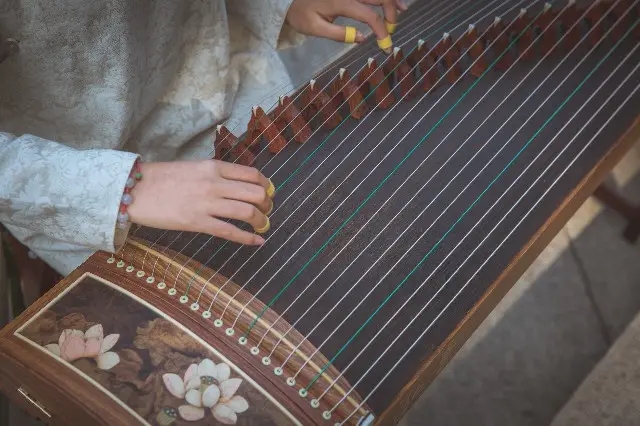How to play Glide and Glide on Guzheng
The glissando of the zheng is very rich, there are mainly five kinds of portamento, glissando, line portamento, upturn portamento and downturn portamento. It is described as follows:

a. Portamento: After plucking the strings with the right hand, press the strings with the left hand. During the process of pressing the strings, the sound slides and stops when it slides to a certain height (maintains the pitch).
b. Glide note: Press the string with the left hand first, hold it after pressing it to a certain extent, then pluck the string with the right hand, then lift the left hand and slide it upward, and loosen the string back to its original position or to a certain pitch.
c. Slurred Glide: Connect two or more notes like a slurred line with an arc with an arrow, indicating that the slide is played from the first note to the last note in turn.
Portamento does not emphasize a particular note, it emphasizes the exact pitch, exact timing and balanced volume of each note. The requirements for connected portamento are: smooth without being chaotic, continuous and clear, and playing each note coherently and accurately in the sliding of the sound.
d. Up-turn portamento: After plucking the strings with the right hand, the left hand instantly presses the original second or minor third (sometimes a minor second), and then turns back to the original.
e. Glide down: press the string with the left hand first, press the string to the second or minor third (sometimes the minor second), then pluck the string with the right hand, then put the left hand back and press it to the original pressing pitch.
In addition to the above five kinds of portamento, there are some special portamentos on the zither, such as vibrato portamento, special portamento for pressing strings, etc.
The function of portamento is to increase the color of the music, make it vividly express the content of the music, and make the music more singing. Different styles of kotos use a variety of glissandos with different techniques.
 渝公网安备 50010702504639号
渝公网安备 50010702504639号